Working Magic: "Beyond Words" A Celebration of Book Arts in 2018" at WSG Gallery

The cosmologist Carl Sagan once said, “A book is proof that humans are capable of working magic.” His comment admirably describes the lively spirit that animates Beyond Words: A Celebration of Book Arts in 2018 at WSG Gallery through November 24. The exhibit, curated by Ann Arbor artist Barbara Brown, continues an ongoing series -- this is its eighth iteration -- devoted to the art and craft of book-making by artists in the Great Lakes region.
Beyond Words is a noisy little show. The gallery’s atmosphere brings to mind a lively coffee shop filled with convivial patrons rather than the dusky silence of a library. These books have a lot to say, they are saying it out loud and no one is saying, “Shhhh!” There are tunnel books, books with video components, boxed scrolls, tiny suitcase books, books set to music. There’s even a book of poetry made of old tires. Brown says, “I feel like I’ve created an impromptu happening because the works have sound and light and movement.”
Acts of Amore: "Love Has a Thousand Shapes" at A2 Art Center

Right: American Gothic: On the Black Hand Side by Judy Bowman
Love Has a Thousand Shapes is an intimate look at the works of five artists, curated by Andrew Thompson. In the exhibition announcement, the exhibition’s inspiration is cited as having come from Virginia Woolf’s character Lily Briscoe in To the Lighthouse. The name of the exhibition draws from the text itself, in which the phrase described her art-making was an act of love itself. The exhibition, a partnership between Literati Bookstore and the Ann Arbor Art Center, draws inspiration from literary allegories, the announcement also referencing Kurt Vonnegut’s Bluebeard in which a character creates “his final painting, a masterwork of love.” The work in the exhibit explores love “between lovers, friends, family, and with pets, places, and the past. The act of making artwork can be considered an act of love in and of itself.”
With the selection of only five artists, viewers are allowed a more in-depth look at a single artists’ work.
Love Is All Around: An interview with curator Andrew Thompson
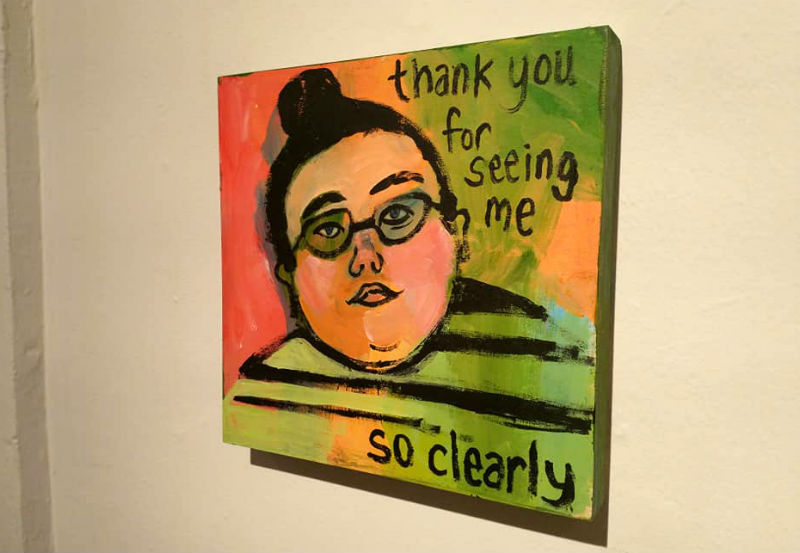
Some art must be seen and experienced in person to get the full effects of its power. This is particularly true of the exhibit Love Has a Thousand Shapes at the Ann Arbor Art Center. Every piece in the show expresses a different aspect of love. Curator Andrew Thompson says that the inspiration came from a phenomenal experience he had in an independent study that he taught at Antioch College. “We read Virginia Woolf’s To the Lighthouse and looked at the artwork of Ann Hamilton,” who created art based on this story. “The character of Lily believes that love had a thousand shapes. She believes that the making of art is an act of love. This statement, this belief, served as the inspiration for the show.”
This message also influenced the pieces that Thompson, who is also a lecturer at U of M’s Stamps School of Art and Design, selected.
UMMA's "Beyond Borders: Global Africa" asks what it means to be an artist from the continent
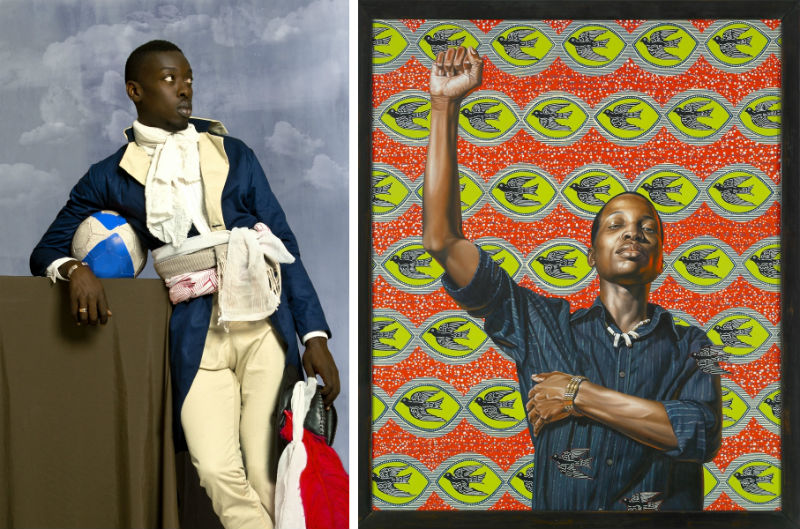
UMMA’s exhibition Beyond Borders: Global Africa extends a conversation recently addressed in Unrecorded: Reimagining Artist Identities in Africa. The newer exhibit asks the audience to consider the roles of contemporary artists, as the subtitle Global Africa suggests, along with a reconceptualization of previously narrow definitions of “African art” or “African artists.” UMMA director Christina Olsen states that the pieces on display, many of which belong to UMMA, “ask questions about what it means to be an ‘African’ artist and make ‘African’ art.” Included in the show are photographs, paintings, installations, and sculptures. This exhibition includes “approximately 40 works of art drawn from UMMA's African art collection and from private and public holdings around the world, including the eminent Contemporary African Art Collection assembled by Jean Pigozzi of Geneva, Switzerland.”
Stamps Gallery's "Have We Met?" explores how institutions can create inclusive, creative spaces
Stamps Gallery’s Have We Met? Dialogues on Memory and Desire explores the artworks of political and social groups that have helped shape Ann Arbor. Curated by Srimoyee Mitra, the large gallery is packed with posters, paintings, digital art, sculptures, installations, video, and spaces for visitors to sit and research social movements and histories represented by the artists. The exhibit takes the gallery space into question, with installations that invite viewers to physically engage with their surroundings throughout the gallery.
The exhibition specifically draws from social movements in Ann Arbor, such as the anti-war and civil rights movements, and the experimental art collective The Once Group. Have We Met? features materials from University of Michigan’s Labadie Collection and the Bentley Library, in addition to “radical artworks by diverse, multigenerational artists and designers whose works are deeply influenced by the ideas of freedom and self-determination; rewriting canonical accounts of history.”
Spontaneous Hues: Elizabeth Schwartz’s solo show "RED" at WSG Gallery

"I love red!” Elizabeth Schwartz exclaims -- and the artist clearly means what she says. RED, her solo exhibit at WSG Gallery, explores and celebrates a powerful hue freighted with cultural and emotional significance. In her most recent series of 11 abstract acrylic paintings on canvas, she shows herself to be a spontaneous colorist who’s not afraid to tackle the contradictory connotations of a color that can project courage, passion, sexuality, danger, aggression, and love.
Fine art is a second career for Schwartz, whose first profession was the law. “I started as a criminal appellate attorney in Detroit and became the deputy director of that office. Then I worked for the [Michigan] Public Service Commission and then the state Attorney General’s office. [Later] I came to Ann Arbor as City Attorney before being appointed an administrative law judge." She continues, “I started painting while I was [still] lawyering … a friend of mine, Fred Horowitz, taught [art] at Washtenaw [Community College]. He was a longtime friend and I was growing weary of law practice. He just changed my life. He said, ‘Take my class -- I may not teach you how to draw, but I can teach you how to see.’ It was magic."
Morag Myerscough creates welcoming worlds that make us reconsider our own
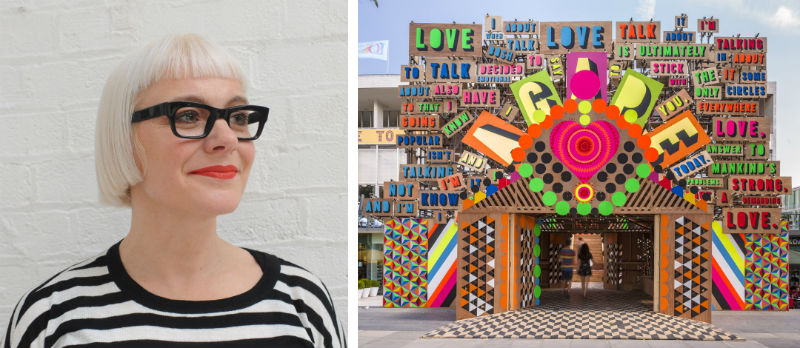
A sucker for colors, I was persuaded solely by the image on the Penny Stamps Speaker Series calendar to see Morag Myerscough speak at the Michigan Theater on September 20 on the theme of “belonging."
Myerscough is a visual artist in London who "explores the theme of 'belonging' in her work, using it to transform public spaces by creating welcoming, engaging experiences for everyone." The Stamps website photo of Myerscough’s structure Temple of Agape, built in partnership with Luke Morgan for London's 2014 Festival of Love, is covered with vibrant hues, visually busy interacting shapes, and positive words that combine for a psychedelic carnival vibe.
At the Michigan, Myerscough took the stage wearing all black and white. Her shirt reminded me of Picasso’s stripes. Her jumpsuit made me wish I looked better in them. Her sheer, long, flowing top layer completed the look. And then there was a surprise, a pop of color: bright Chuck Taylor sneakers.
“Morag’s visual vocabulary is inclusive by nature.” --Elaine Sims
From the Ancient to the Future: Osborne Macharia and Blinky Bill on Afrofuturism
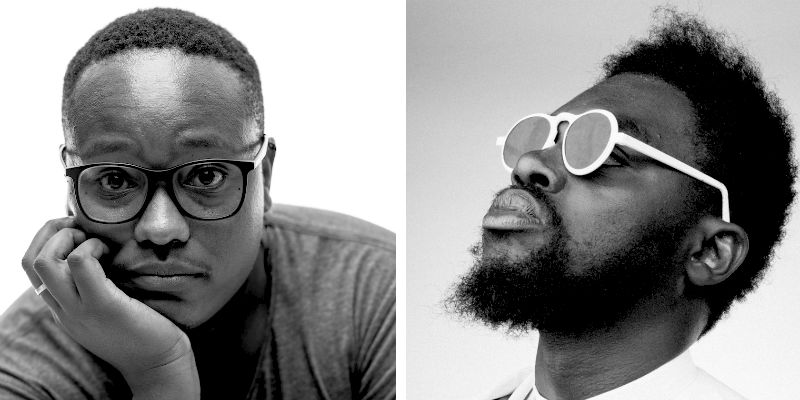
I love the energy of the Penny Stamps Distinguished Speaker Series, where one can go to the Michigan Theater, join a multi-aged crowd, then sit back and hear the perspective of a creator who has been selected to create a dynamic learning experience for the audience members.
But I hate that idea of Afrofuturism confounds me.
I once had a friend who was into Afrofuturism and I could never quite understand what he was talking about. I’ve been to some Afrofuturism-themed exhibits, I’ve listened to a speaker or two, and I’ve seen a movie about it. I tried to get into it but remained confounded.
Kenyan photographer Osborne Macharia stood on the stage of the Michigan Theater on September 13 and said he hoped the audience would have a better understanding of the Afrofuturism concept by the end of the evening. Mancharia’s website describes Afrofuturism as “an artistic repurpose of the post-colonial African narrative through integrating historical elements, present culture and future aspirations of people of colo[u]r by using narrative, fantasy, and fiction to highlight African identity.”
At the Michigan Theater, I felt the same as I once did as a math student before my algebra breakthrough: I’d give it a try but didn’t feel confident that I would leave the session with any grand revelations.
But I came with an open mind.
Exploring the Ritual and Routine: Ann Arbor Art Center's "Rinse/Repeat"
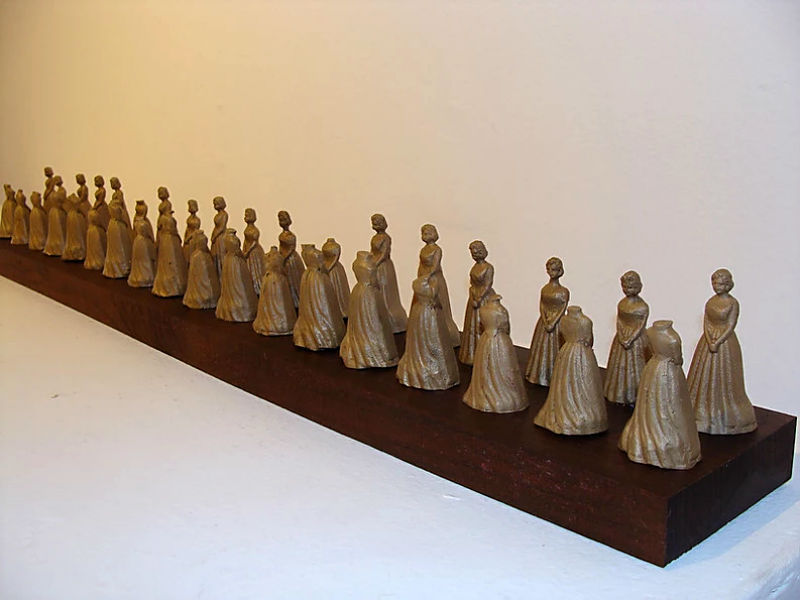
The Ann Arbor Art Center’s most recent juried exhibition asks: “When does action transcend habit to become something more meaningful? RINSE/REPEAT explores concepts of ritual or routine in creative practice, where the experience is intentional, sacred -- not solely focused on the product or outcome, but on the set of actions.”
The Art Center frequently hosts exhibitions curated by guest jurors, and like many of its recent exhibits, the show continues to bring a variety of multi-media works by contemporary artists, both local and non-local. The exhibition as a whole has a strong emphasis on fiber arts and less traditional “fine art” media.
Juror Marlee Grace conceptualized RINSE/REPEAT, which addresses artists’ processes, and has selected a group of pieces that, in different ways, address the often intense, repeated processes behind the finalized works. Grace is most known for her Instagram account “Personal Practice,” where she posts videos of herself exploring movement, and many works in the show comment on movement and motion, approaching the subject of repetition literally.
Rocket Ride: Anne and Jerzy Drozd's "Science Comics: Rockets - Defying Gravity"
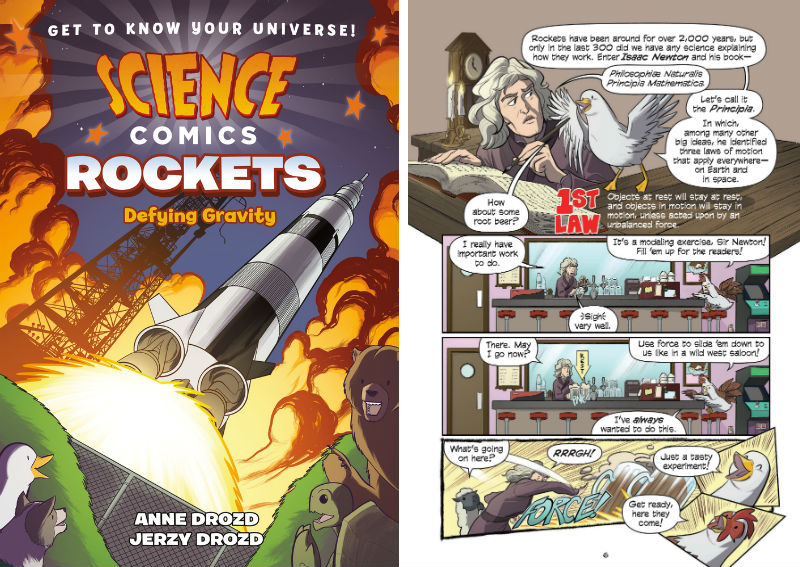
Everything I learned about rockets as a kid came from a Kiss song. That's rather unfortunate because I found out much later that "Rocket Ride" was not, in fact, about space travel but rather very Earthy matters.
If only I had Anne and Jerzy Drozd's Science Comics: Rockets - Defying Gravity to guide me rather than a subliterate Ace Frehley jam.


































